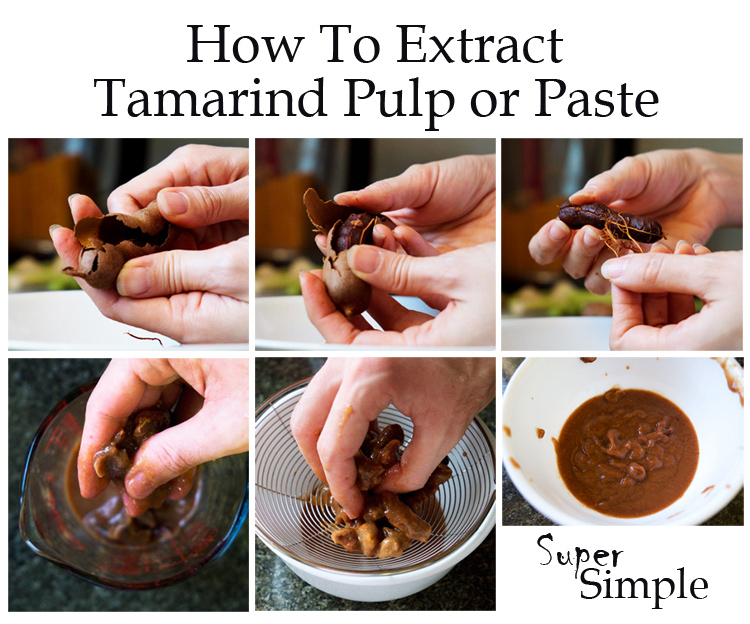Tamarind is a necessary evil in different cuisines especially in Southeast Asian cuisine. Think pad Thai, Malaysian asam laksa, Nyonya rendang, curries and chutneys. They all have tamarind in them. It’s basically a souring agent. It’s important. Period.
How is tamarind sold?
1. Whole pods: This is tamarind in its original state. It hasn’t been processed in any way. Think whole fruit like an orange.
2. Block: This type is similar to the above except without the shells. Imagine oranges that were peeled and then compacted into a block.
3. Paste: This type is ready to be used but may have preservatives or salt in them.
It comes in juice and powder form too, but it’s not suitable for cooking.
I usually buy the whole pods form. I use what I need while the rest of the pods remain in the refrigerator. In block form, once opened, I feel that they’re more inclined to grow mold and I’d have to freeze the rest in smaller portions. It’s up to you what form to buy. Whatever works for you.
Most recipes will call for tamarind pulp or tamarind paste. They mean the same thing. If you purchase it in paste form, then no extraction is needed. Just measure and scoop out the required amount. Be wary that if the paste already contain salt, you will have to adjust the dish’s salt level.
Extracting tamarind pulp or paste is SUPER SIMPLE. This is how I extract from whole pods. It’s not pretty, but once cooked, it tastes heavenly.
Quick Method Makes about 1/2 cup pulp or paste
From dried whole pods:
4 oz tamarind pods, shells cracked & fibers removed
1/2 cup (4 oz) hot water
From compressed tamarind block:
4 oz tamarind block
1/2 cup (4 oz) hot water
directions:
1. Soak the tamarind (with seeds and at times fibers is fine too) in hot water for 15-20 minutes.
2. Use your fingers to squeeze them and separate the flesh from the seeds.
3. Pour the tamarind mixture on a sieve with a bowl below to catch the pulp. Using your hands or a spoon, stir and press to extract as much tamarind pulp or paste. What’s left will be the fibers, membranes and seeds. Discard them.
Notes:
1. You can extract extra tamarind pulp/paste, freeze it in small batches and use it when you need to.
2. Tamarind is sold in Asian markets. I’ve seen whole pods sold in Whole Foods.
3. Some recipes will ask for Tamarind juice. To do this, just mix 1/2 cup pulp to 2 cups water.
Here’s a short clip of how to crack the shells of whole pods and remove the membranes.
Recipes that uses Tamarind:
1. Asam Laksa: An addictive & popular Malaysian spicy & sour noodles soup with poached fish in tamarind, chili, mint & lemongrass broth.
2. Beef Satay: Marinated meat packed with so much flavor, smoky & charred yet still tender. Enjoy with a delectable savory, spicy, sweet peanut sauce.
3. Tamarind Prawns: Plump juicy prawns coated with a delicious sticky sweet & sour sauce and fried with chilies, onions & curry leaves.
4. Beef Rendang: Tender caramelized beef braised in a phenomenal flavorful & aromatic mix of spices & coconut milk. It’s layer upon layer of deliciousness.
5. Pad Thai: A widely popular soft & chewy stir-fried noodles in perfectly balanced sweet, savory & sour sauce. So good & addictive.
6. Roasted Spiced Chicken with Coconut Sauce: A popular Malaysian dish. Roasted chicken marinated in flavorful spices slathered with a creamy spiced coconut milk sauce.
How often do you use tamarind and which form of tamarind do you prefer to use?


1 comment
Thank you! I’m making Pad Thai and I bought pods. Wasn’t sure how to handle them for paste, but I am now!